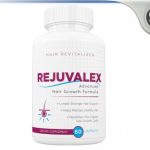What are detoxes?
January is a great time to take positive steps towards a healthier lifestyle. But just because something claims to be a game changer for your health doesn’t mean it’s actually good for you.
Detoxes, sometimes referred to as “cleanses,” have maintained their popularity as a health trend for years. Devotees claim they help rid the body of toxins and give your digestive system a much-needed break. The intended results are feeling younger, healthier, and more energized.
“Detoxes are advertised as a means to rid the body of excess toxins, rest the digestion and immune systems, and restart [your] metabolism,” says Ashley Reaver, an Oakland, CA–based dietitian and founder of My Weekly Eats.
AN UNREALISTIC GOALThe goal of a detox is to flush out the toxins that our bodies come in contact with every day — be it the toxins in the air, the food we eat, or the products we use. This is typically done by fasting, drastically restricting food intake, replacing solid foods with liquids, or drinking a ton of water — all which could have negative side effects on your health.
1. Juice or smoothie cleanse
These liquid-only cleanses, which are arguably the most popular, replace solid foods with a selection of fruit- and vegetable-based juices or smoothies. Typically, juice and smoothie cleanses last anywhere between 3 and 21 days — although some people go much longer.
There are tons of companies out there that sell these kinds of cleanses. You can also buy juices and smoothies from a specialized shop or make them at home.
Drinking fruit- and vegetable-based juices — as long as they’re fresh-pressed — and smoothies can definitely be healthy. These drinks are often packed with nutrients, especially if they go heavy on the veggies, and can be a great addition to your diet.
But drinking only juices and smoothies and depriving your body of actual food is where this detox veers into unhealthy territory.
“Typically, [liquid] detoxes remove the majority of protein and fat from the diet,” says Reaver.
Not only does the lack of protein and fat mean you’ll spend your entire detox feeling hungry, but it can also lead to a host of other negative side effects.
2. Liver detox
While this sounds like a great idea — it’s never a bad idea to eat a diet that supports healthy liver function — you don’t need a formal “detox” in order to do so.
“Fortunately, the liver is well-equipped to handle the toxins that we’re most commonly exposed to,” says Reaver.
“Instead of a ‘detox’ […] people should [focus on] eating a diet that’s rich in both raw and cooked fruits and vegetables; includes soluble fiber like beans, nuts, and grains; and limits alcohol intake. These are the essential building blocks that’ll allow your liver to operate at peak function.”
3. Food restriction
Another form of detox are ones that restrict certain foods or food groups as a way to flush the body of toxins and improve overall health.
Restricting or eliminating certain foods in your diet can be helpful under certain circumstances and if you do it the right way.
“Some people benefit from a cleanse because it removes food groups that may cause them discomfort, like gluten or dairy,” says Reaver.
The key, however, is to be strategic in your restriction.
“Instead of eliminating most foods, try to remove a type of food for a week and see if you feel better,” explains Reaver.
“Then, add the food back in and monitor your symptoms. If bloating, gas, intestinal discomfort, constipation, or diarrhea return, then it may be a good idea to remove that food group from your diet.”
However, eliminating too many foods or whole food groups at once, like some food cleanses require you to do, will not only feel overly restrictive, it also won’t give you any insight into what foods are negatively impacting your health.
If you suspect you might have food sensitivities, the elimination diet could help. It might be best, however, to try this diet while under the supervision of a doctor.
4. Colon cleanse
Most cleanses attempt to get rid of toxins through dietary changes. But there are also cleanses that attempt to flush the body from the other end.
Colon cleanses attempt to cleanse the digestive tract and rid the body of toxins by promoting bowel movements via supplements or laxatives. Colon hydrotherapy, also known as a colonic, removes waste manually by flushing the colon with water.
Either way, these cleanses work to remove built-up waste — which they claim will also remove toxins and improve overall health.
But not only are colon cleanses extremely unpleasant, but they may also be dangerous.
“Colon cleanses and colon hydrotherapy should be avoided unless done at the direction of a physician,” explains Reaver.
“They may cause stomach cramping, diarrhea, and vomiting. More serious outcomes can include bacterial infection, perforated bowels, and electrolyte imbalance that can cause kidney and heart problems.”
Instead, Reaver suggests consuming a diet high in soluble and insoluble fiber to help clear out waste.
“These two types of fiber will effectively remove debris and undigested food particles from the colon that can cause bloating, painful excretion, and constipation.”







